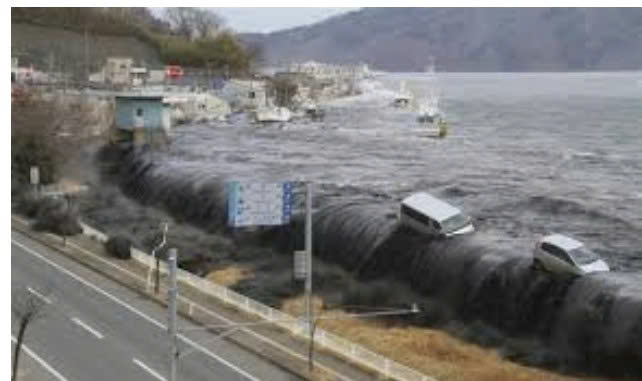It was just another quiet summer evening along Alaska’s remote and rugged coastline when, without warning, the calm gave way to chaos. The ground didn’t just tremble—it convulsed, unleashing the kind of power that few people ever experience in their lifetimes. What began as a routine twilight turned into a terrifying reminder of the Earth’s raw and unpredictable strength. In mere seconds, an enormous earthquake struck the Alaskan Peninsula, shaking homes, roads, and the nerves of everyone within hundreds of miles.

The quake hit late Wednesday evening, centered just off the coast near the small community of Perryville. According to the U.S. Geological Survey (USGS), it registered a staggering magnitude of 8.2, making it one of the largest seismic events to hit the United States in decades. The epicenter was located about 91 kilometers southeast of Perryville and struck roughly 35 kilometers beneath the seafloor—deep enough to jolt the land violently yet shallow enough to raise immediate fears of a tsunami.
Within moments of the quake, Alaska’s emergency networks roared to life. Sirens began wailing in coastal towns like Kodiak, Sand Point, and King Cove, echoing across the otherwise silent night. Residents rushed to pack what they could—blankets, flashlights, important papers—and fled toward higher ground. Videos quickly surfaced on social media showing cars jammed along evacuation routes, families wrapped in coats under the glow of gas station lights, and emergency responders directing traffic through the dark. The tension was palpable.
The U.S. National Tsunami Warning Center (NTWC) wasted no time issuing a tsunami warning for a massive stretch of southern Alaska, spanning from Hinchinbrook Entrance to Unimak Pass. People living near the water were urged to evacuate immediately, moving inland or climbing to elevated terrain. For hours, the eerie wail of warning sirens mingled with the nervous chatter of people calling loved ones. Even communities as far as Hawaii and Guam were placed under temporary watch until experts could confirm whether a tsunami would cross the Pacific. Fortunately, later assessments indicated that these regions were not at risk of a major wave.
Seismologists around the world immediately began studying the event, confirming that it was not just another routine quake. This was a “megathrust” earthquake—a type that occurs along subduction zones where one tectonic plate dives beneath another. These are the same types of quakes that have caused some of the world’s most devastating tsunamis, including the 2011 event that struck Japan. The Alaskan Peninsula lies along the notorious Ring of Fire, a chain of fault lines circling the Pacific Ocean that produces nearly 90% of the planet’s earthquakes.
For Alaskans, earthquakes are nothing new. The state sits atop one of the most active seismic zones on Earth, and small tremors are a near-daily occurrence. But even seasoned residents knew this one was different. “It felt like the whole world shifted,” said one resident of Kodiak Island. “Everything around us was moving—walls, lights, the ground itself. We just grabbed our kids and ran.” The shaking reportedly lasted for up to two minutes in some areas, a near-eternity when the Earth itself feels unstable.
As dawn approached, the immediate panic began to subside, replaced by uncertainty. In the hours following the main event, at least eight significant aftershocks rippled through the region, two of which measured above magnitude 6.0. Each one reignited the fear that the ground could erupt again at any moment. Residents slept uneasily in cars, schools, and designated shelters, listening for updates from officials and waiting for the all-clear.
So far, no major injuries or widespread damage have been reported, though inspections were still underway. Alaska Governor Mike Dunleavy activated the state’s emergency operations center immediately, coordinating efforts between FEMA, local governments, and the U.S. Geological Survey. “Our priority is ensuring everyone’s safety,” he stated, emphasizing that the event served as a sobering reminder of how quickly nature can change everything.
In other parts of the world, the quake also drew concern. Tsunami monitoring centers in Japan, New Zealand, and Chile began analyzing ocean data to ensure the seismic waves had not disturbed their coastlines. The Pacific Tsunami Warning Center maintained close contact with the U.S. authorities, tracking every potential shift in sea level. For much of the night, a sense of global vigilance hung over the Pacific Rim—a silent acknowledgment of the interconnectedness of these fragile coastal communities.
Experts noted that Alaska may have avoided a large-scale disaster this time, but the incident underscores the ever-present risk of living along the Ring of Fire. The region’s geology guarantees more earthquakes in the future, though predicting exactly when or where remains impossible. Scientists warned that large quakes like this one often lead to delayed aftershocks or geological changes that can cause future landslides, coastal shifts, or even tsunamis days or weeks later.
By early morning, most tsunami warnings had been lifted, and many evacuees returned home to find their properties largely intact. Yet even as calm returned, a lingering unease remained. Alaska’s rugged beauty is both breathtaking and unforgiving—a land carved by glaciers, volcanoes, and seismic upheaval. Those who live there know that the ground beneath their feet is never truly still.
The 8.2 quake will likely be studied for years, not only for its sheer magnitude but also for what it reveals about the complex tectonic forces shaping the region. Seismologists pointed out that Alaska has a long and storied history with powerful earthquakes. The infamous 1964 Good Friday Earthquake, which struck near Prince William Sound with a magnitude of 9.2, remains the most powerful ever recorded in North America. While the recent quake was smaller, its potential impact was enough to remind everyone of just how volatile the region remains.
For those who experienced it, the event was more than a scientific phenomenon—it was a visceral confrontation with nature’s might. Many residents described feeling a mix of awe and humility afterward. “You realize how small you really are,” one woman said. “In that moment, everything else in life—work, plans, even worries—just fades away.”
As Alaskans clean up, check their homes, and return to normal routines, the world watches with a collective breath held. The quake may not have caused widespread destruction, but it serves as an urgent reminder of how suddenly disaster can strike. The Ring of Fire remains restless, and the Alaskan Peninsula, perched at its northern edge, will always be on the front line.
In the end, Alaska once again showed both its vulnerability and resilience. The land may quake, the sirens may sound, and fear may sweep through coastal towns, but the people endure—rooted in one of the most powerful and unpredictable landscapes on Earth. When the planet speaks through tremors like these, the message is unmistakable: we live on a living, breathing world, and it demands both respect and readiness.





